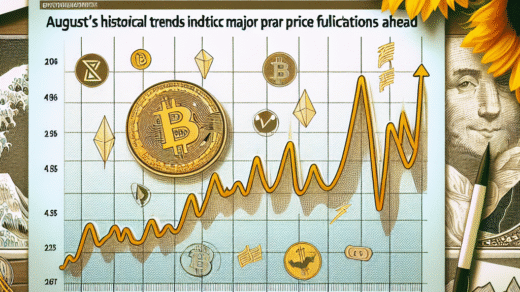Bitcoin (BTC) is once again making headlines as its price chart reveals a bullish pattern reminiscent of the significant price surge experienced in late 2024, when the cryptocurrency skyrocketed from $70,000 to $100,000. This surge comes at a time when concerns over the sustainability of the U.S. national debt are mounting, creating a unique intersection of macroeconomic factors and technical analysis that could impact Bitcoin’s trajectory.
Understanding the Golden Cross
According to the charting platform TradingView, Bitcoin is on the verge of confirming a “golden cross.” This technical pattern occurs when the 50-day simple moving average (SMA) crosses above the 200-day SMA. Traders often interpret this as a bullish signal, indicating that short-term price movements are outperforming long-term trends. The golden cross is often seen as a precursor to a major bull run, and many investors are watching closely.
Historical Context: The Death Cross
The upcoming golden cross is particularly noteworthy given its proximity to the recent “death cross,” which occurred weeks prior. The death cross, characterized by the 50-day SMA dipping below the 200-day SMA, is often viewed as a bearish signal. However, in this case, it may have acted as a bear trap. In early April of this year, bears found themselves on the wrong side of the market, as prices began to turn higher, leading to a new uptrend.
Historically, a similar scenario unfolded from August through September of 2024, where Bitcoin bottomed out around $50,000 during the death cross before surging to a record high above $109,000 in January this year. The patterns suggest that the current bullish sequence, which began in early April, could reach new heights following the impending confirmation of the golden cross.
Macro Factors Supporting Bitcoin’s Rally
While technical analysis provides valuable insights, it’s essential to consider the broader economic environment. Recent actions by credit rating agency Moody’s, which downgraded the U.S. sovereign credit rating from the highest “Aaa” to “Aa1,” have amplified concerns over the growing national debt, now estimated at $36 trillion. This downgrade signals potential fiscal instability, which could drive investors towards alternative assets like Bitcoin.
The bond market has been reflecting these fiscal concerns for quite some time. Persistent elevated Treasury yields indicate expectations for ongoing fiscal splurges and a higher sovereign risk premium. Both of these factors are generally considered bullish for Bitcoin, as investors may seek refuge in cryptocurrencies amid traditional market uncertainties.
Implications for Bitcoin Investors
As Bitcoin approaches the golden cross, investors should consider the implications for their portfolios. The convergence of technical indicators and macroeconomic factors creates a compelling case for potential price appreciation in the coming weeks. However, it’s important to approach with caution, as past performance does not guarantee future results.
Investors should stay informed about market developments and consider diversifying their portfolios. For those looking to enter the cryptocurrency space, platforms like how to buy Bitcoin or explore other cryptocurrencies like Ethereum, Solana, or XRP, can provide valuable insights into the market.
Conclusion: The Road Ahead for Bitcoin
In summary, Bitcoin’s nearing golden cross amidst rising U.S. debt concerns presents an intriguing landscape for investors. The combination of bullish technical signals and macroeconomic challenges may pave the way for significant price movements. As always, investors are advised to conduct thorough research and consider various strategies, such as utilizing exchanges like Kraken, Binance, or eToro, to navigate the evolving market effectively.
Meta Description: Bitcoin approaches a golden cross amid rising U.S. debt concerns, signaling potential bullish trends. Learn what this means for investors and the implications for Bitcoin’s price trajectory.







